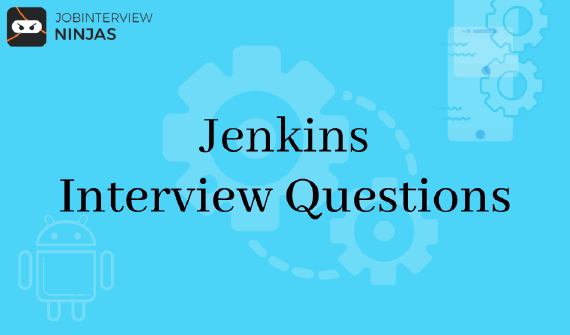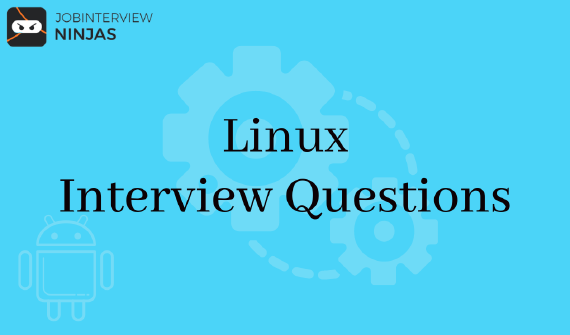
Top 40 Jenkins Interview Questions And Answers For Freshers/Experienced
If you are looking for a career in software development, then Jenkins is definitely worth exploring. This widely used …

Here we have provided the frequently asked SAP ABAP interview questions. So, if you appearing for the technical interview then you also need to prepare these SAP ABAP Interview questions and answers for upcoming 2022 job interviews. Here we have given questions for all levels i.e. freshers, intermediate, experienced to crack the job interview after preparing SAP ABAP Interview Questions & Answers.
About SAP: ABAP is a programming/coding language that performs in the SAP ABAP runtime conditions, developed and used by SAP for the development of application programs that includes Reports, Module Pool Programming, Interfaces, etc.
Also, prepare for Embedded C interview questions, Networking interview questions, and other language interview questions from here.
2. Explain the ABAP data dictionary?
3. Explain the difference between pool tables and transparent tables?
4. Explain BDC (Batch Data Communications) programming?
5. Define different data classes?
7. Name the functional modules required in sequence in BDC?
8. Explain a foreign key relationship?
9. Differentiate between table and structure in data dictionary?
11. Tell about components of SAP scripts?
12. Tell about Control break events in ABAP?
13. How will you format the data before noting the statement in the report?
14. Differentiate between Template and Table?
15. Explain ALV programming in ABAP?
16. When to use End-of-selection event?
17. Differentiate between ABAP and OOABAP? When do we use OOABAP?
19. Tell the use of a ‘pretty printer’?
20. Differentiate between ‘Type’ and ‘Like’?
21. Tell about various ABAP/4 editors?
22. Differentiate between a dialog program and a report?
24. How cluster table store the data?
25. Tell the way to debug a script form?
26. Name different types of data dictionary objects?
27. Tell the ways to do the tuning?
28. Explain ‘group by’ in the ‘select’ statement?
30. Name the methods of modifying SAP standard tables?
31. Differentiate between a ‘Database index’ and a ‘Match code’?
32. What are the advantages of the modularization technique?
33. What are the ways of creating callable modules of code within one ABAP/4 program?
34. Explain different types of parameters?
35. Name different databases Integrities?
36. Tell me the use of events and actions in Web Dynpro?
38. Differentiate between user exit and BADIs?
40. What is the way to insert a line into ABAP internal tables?
2. Explain the ABAP data dictionary?
3. Explain the difference between pool tables and transparent tables?
Transparent tables: In a database, it makes a one-to-one relation with the table. Its design fits a single database field.
Pooled tables: In a database, it has multiple one relations with the table. Pooled tables are reserved at the database level.
a) Basic List: For simple reports
b) Statistics: For Percentage, Average, etc.
c) Ranked List: For analytical reports
4. Explain BDC (Batch Data Communications) programming?
5. Define different data classes?
Master Data: The data in this class is rarely change
Transaction Data: The data can be frequently changed in this class
Organization Data: This data is personalized data and is put into the system when the system is configured. It changes rarely.
System Data: R/3 system itself uses this data.
7. Name the functional modules required in sequence in BDC?
The three functional modules are used in sequence to execute data transfer effectively using BDC programming. They are
a) BDC_OPEN_GROUP
b) BDC_INSERT
c) BDC_CLOSE_GROUP
8. Explain a foreign key relationship?
9. Differentiate between table and structure in data dictionary?
11. Tell about components of SAP scripts?
12. Tell about Control break events in ABAP?
Some control break events are:
AT-FIRST: This event runs the statements before records are processed.
AT-LAST: This event runs the statements after all records are processed.
AT-NEW: This event runs the statement before the group of records is processed.
AT-END: This event runs the statements after processing a collection of records.
13. How will you format the data before noting the statement in the report?
The reports output can be formatted by using the loop event
a) .at first
b) .at new
c) .at last
14. Differentiate between Template and Table?
15. Explain ALV programming in ABAP?
16. When to use End-of-selection event?
17. Differentiate between ABAP and OOABAP? When do we use OOABAP?
19. Tell the use of a ‘pretty printer’?
20. Differentiate between ‘Type’ and ‘Like’?
‘Type’: At the time of declaring we assign data type straight to the data object.
‘Like’: We allocate the data type of other objects to the declaring data object.
‘Type’ refers to the current data type while ‘Like’ refers to the current data object.
Know the Interview Criteria of these MNCs!!!
21. Tell about various ABAP/4 editors?
22. Differentiate between a dialog program and a report?
24. How cluster table store the data?
25. Tell the way to debug a script form?
You have to follow the following details given below to debug a script form:
SE71–>give the form name->utilities->activate debugger
26. Name different types of data dictionary objects?
27. Tell the ways to do the tuning?
28. Explain ‘group by’ in the ‘select’ statement?
30. Name the methods of modifying SAP standard tables?
31. Differentiate between a ‘Database index’ and a ‘Match code’?
32. What are the advantages of the modularization technique?
33. What are the ways of creating callable modules of code within one ABAP/4 program?
34. Explain different types of parameters?
Formal Parameters: It is represented during the definition of subroutine with the ‘FORM’ statement
Actual Parameters: It is defined during the call of a subroutine with the ‘PERFORM’ statement
35. Name different databases Integrities?
36. Tell me the use of events and actions in Web Dynpro?
38. Differentiate between user exit and BADIs?
39. Tell me the statement that is needed in an ABAP program to output an icon using a "write" statement?
There are 2 statements that are needed in the ABAP program:
INCLUDE: Include Statement is a mandated statement for the program.
WRITE: The syntax of the Write Statement is mentioned below:
WRITE AS ICON
40. What is the way to insert a line into ABAP internal tables?
To insert lines in ABAP internal tables we have to use the INSERT statement command. Firstly write the values that you want to insert in a work area then utilize the INSERT statement to insert the values in the work area to the internal table.
The syntax are:
INSERT
OR
INSERT

If you are looking for a career in software development, then Jenkins is definitely worth exploring. This widely used …

In this post, we will cover a few Linux interview questions and their answers. So, let’s get started. In this …